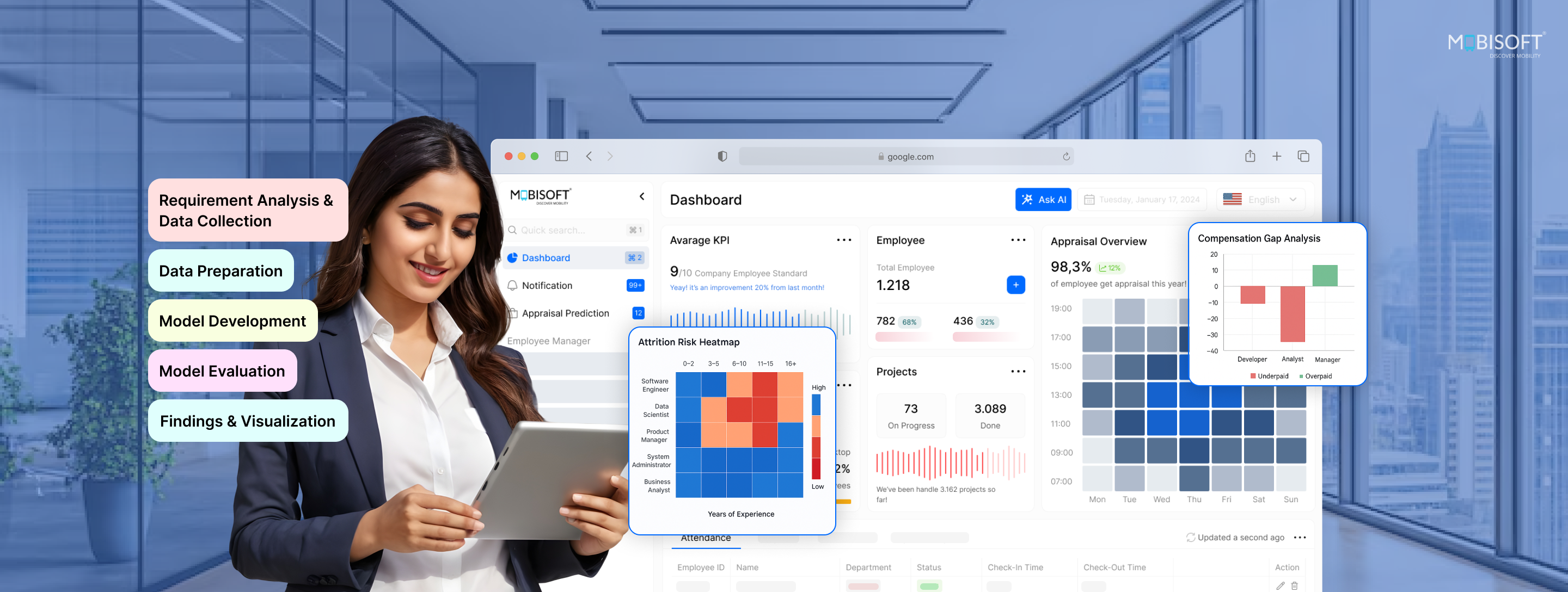An academic research institution was grappling with a steady rise in employee attrition. Internal assessments revealed that one of the core issues was compensation misalignment. Salaries did not reflect current market trends or individual employee value, leading to dissatisfaction and increased turnover. The organization needed a scalable, data-driven solution to redefine its compensation strategy and retain top talent. In response, we designed and implemented a Machine Learning (ML) powered and AI-based employee performance prediction system capable of predicting fair and competitive salary benchmarks. The model leveraged key employee attributes such as skills, years of experience, job role, and geographic location to deliver salary recommendations that aligned with both internal equity and external market conditions.
We developed a predictive model using machine learning for employee evaluation. The model supports compensation planning and ensures equitable salary distribution. The model evaluated each employee’s profile and generated benchmark salary recommendations.
This approach enabled workforce performance optimization using AI and delivered insights for targeted pay adjustments.
Among all tested models, XGBoost provided superior performance:
Its ability to handle complex feature interactions and prevent overfitting made it ideal for this application.

A broad range of employee and market variables was evaluated. While not all were retained in the final model, they played a role in exploratory analysis and model training iterations.
| Employee Attributes | Market & Salary Data | Location & Market Trends | Other Considerations |
|---|---|---|---|
| Job Level, Job Type, Work Type | Market Salary, Target Market Percentile | Regional adjustments based on location, market volatility, and performance-linked factors | Job Posting Date, Rating, Currency Type |
| Company, Job Family, Job Role | |||
| Education, Years of Experience, Job Code | Current Salary, Pay Position | Source of Data (Job Portals) | |
| Skill set |
These variables were essential in refining the model and enhancing its ability to deliver AI-based KPI assessment system development for transparent performance reviews.
To enhance understanding and facilitate strategic discussions, we created a suite of visualizations:
These insights helped the client quickly identify compensation inefficiencies and take targeted action.
The implementation had a measurable impact on the client’s HR and compensation functions:

by ensuring salaries aligned with market expectations and internal equity

in performance appraisals, salary negotiations, and budgeting

in the talent market by aligning compensation strategies with industry benchmarks
The ML-powered Compensation Model helped the client move from a static salary structure to a dynamic, data-driven approach. By predicting fair compensation based on employee profiles and market trends, the organization addressed pay gaps, improved retention, and strengthened its employer brand. This project highlights how machine learning can bring clarity and consistency to compensation planning. It allows businesses to make informed decisions rooted in data rather than intuition, leading to better outcomes in talent management, budgeting, and overall workforce strategy.